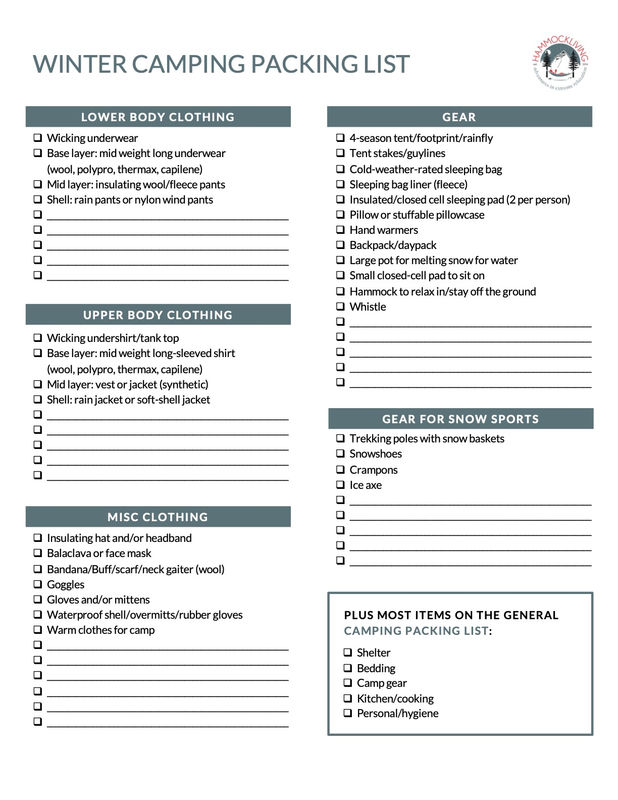 When you buy something using links in our stories, we may earn a small commission. Read more about our policy.
When you buy something using links in our stories, we may earn a small commission. Read more about our policy.
So you want to try cold weather camping? It’s very doable with these winter camping hacks that will help keep you warm and happy as we head into the coldest months of the year.
Having an enjoyable winter camping experience goes beyond good gear and warm clothes. You’ll want to make sure you have a proper winter camping sleep system, and have all the helpful little tips and tricks in your arsenal to stay warm and safe out in the wilderness.
Here is our list of the top 9 ways to stay even warmer when you’re out camping in the cold this winter, plus tips on what to wear winter camping.
MORE: How to Stay Warm Hammock Camping in the Winter
1. Invest in high-quality winter camping gear
You get what you pay for
Proper gear is essential anytime you’re going out into the wilderness, and this is doubly important when it’s cold and your wellbeing and perhaps livelihood is at stake. I know, it ain’t cheap, but I promise you don’t want to skimp on quality gear.
Pro tip: Buy expensive gear in the off season when it’s on sale.
What is your sleeping bag rating?
You’ll want a bag that’s rated to at at least 10 degrees cooler than the lowest temperature you plan to encounter. Your options are down or synthetic. Down is favorable because it’s lightweight, but you’ll need to make sure it stays dry or it loses its warming power.
Do you need a four-season tent?
A four-season tent is a smart investment if you’re doing any cold weather or snow camping. These tents have stronger poles and are generally much more sound structures than a three-season tent, using more substantial materials to protect you from the elements like falling snow and high winds.
Some four-season tents use double-walled designs and have steep angled sides to withstand snowfall. They also pay close attention to ventilation, which will prevent frost from building up on the inside. And, many offer proper vestibules giving you a place to store snowy gear so there’s less chance the snow follows you inside. The vestibule also gives you a break from wind and an area to cook that isn’t inside your tent, which can be dangerous.
Pro tip: No matter how cold it is outside, always open the tent’s vent to allow air to flow and reduce condensation, and choose the smallest tent possible so you have less space to heat up.
2. Get that fire going, quickly
There are a few tried and true fire hacks to get any wood to light, providing that imperative warmth on a cold day or night. If it’s been snowing, firewood will be wet or—worse—frozen. A few ways to outsmart this situation:
- Pull Start Fire is a firestarter pack ($17.99 for three) that works in seconds, lighting wood in any weather, no matter how wet or frozen. It’s brilliant and so easy to use. No matches, lighter, or kindling required, and it’s windproof up to 200mph (though I hope you’re not outside in 200mph winds).
- Cotton balls soaked in petroleum jelly. Do this before venturing out, and pull out the cotton balls to quickly start a fire. (I’ve actually never tried this, so let me know how it works?)
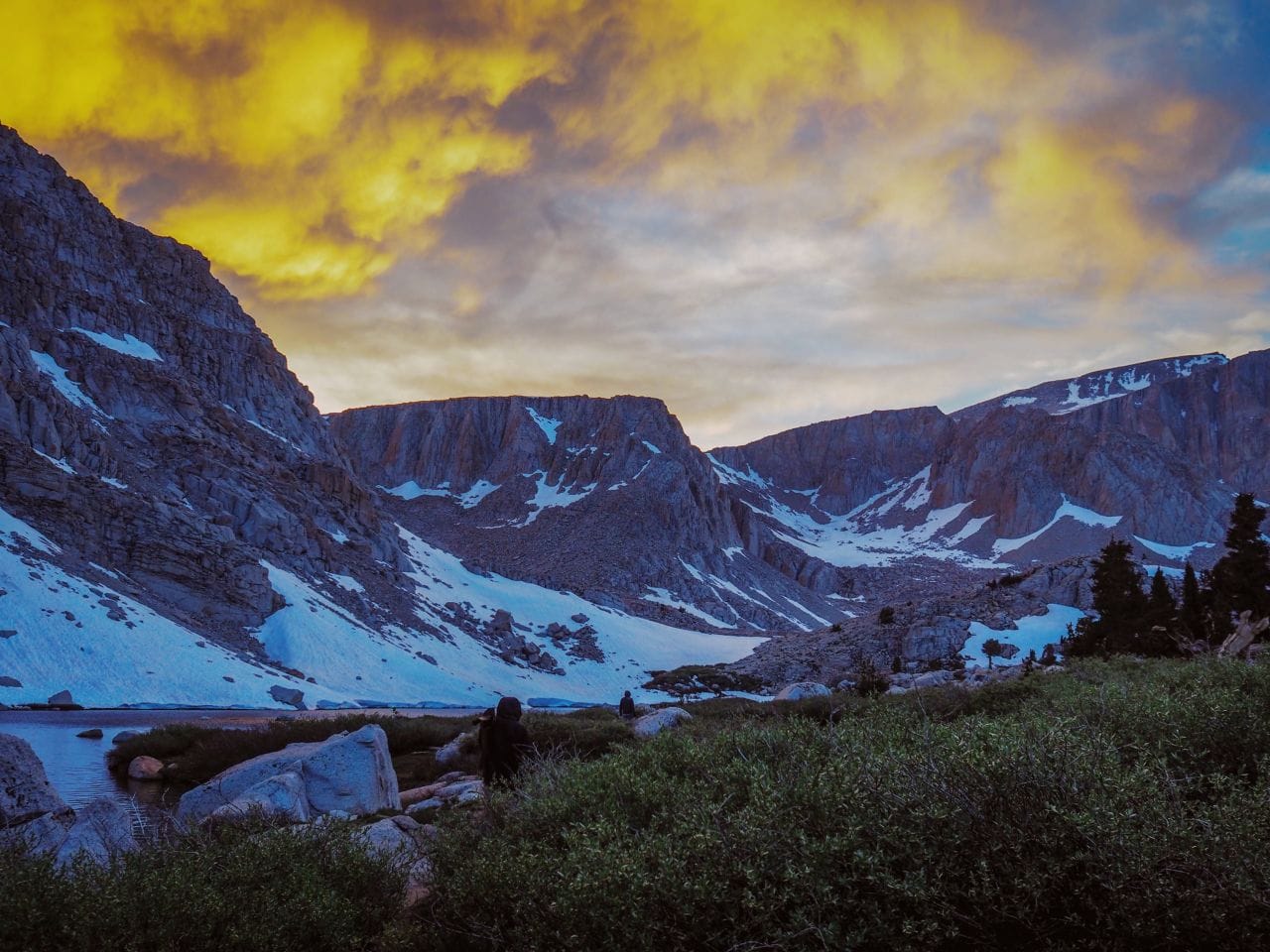
3. Layer up at night
Layer on the clothes
On cold nights, I wear—at least—a tank top, long-sleeved mid-weight base layer, and fleece. You don’t want anything too tight that might restrict blood flow to your arms and hands. Don’t be afraid to sleep in a beanie or with gloves on. On the bottom, I suggest thermals and wool socks (I have some that go up to the knees).
Change your clothes before bed
It’s also important to wear clean clothes, not what you’ve had on all day, which undoubtedly has moisture baked in, making it harder to stay warm. You want dry clothes to sleep in.
Pro tip: To remove excess room for cold air to gather at the bottom of your sleeping bag, pile tomorrow’s clothes—and any extras—around your feet. This also keeps the clothes warm so you don’t have to put on freezing cold layers in the morning. And, bring your boots into your tent to keep them somewhat warmer than outside. Every little bit helps.
Don’t get too hot
If you start sweating inside your sleeping bag, it’ll trap moisture inside and cause your body temperature to drop as it tries to cool you off. This totally defeats the purpose. I know, it sounds like an impossible balance—get warm, but not too warm!—but proper layers pay off.
Choose synthetic fabrics
Polyester and polypropylene are your friends, and of course the holy grail that is wool. Cotton is no good because it doesn’t wick away moisture, so it’s best to stick with synthetics.
Also layer up on bedding
Double down with an extra sleeping pad or mat for even more warmth and comfort. You will want full-length pads to keep you warm from head to toe. Try a closed-cell foam pad on the ground level and an inflatable pad on top.
4. Choose your tent spot wisely
Cut down on wind by setting up camp near trees
If it is windy, you’ve got some extra work to do to make sure you’re secure. First, ensure your tent is tucked in good and tight with firm lines. There are wind-resistant stakes you can opt for (or use big rocks), and tents have wind ratings, if that’s a concern. Wind can be detrimental to your gear, so make sure it’s properly rated if you’re headed into a windy area.
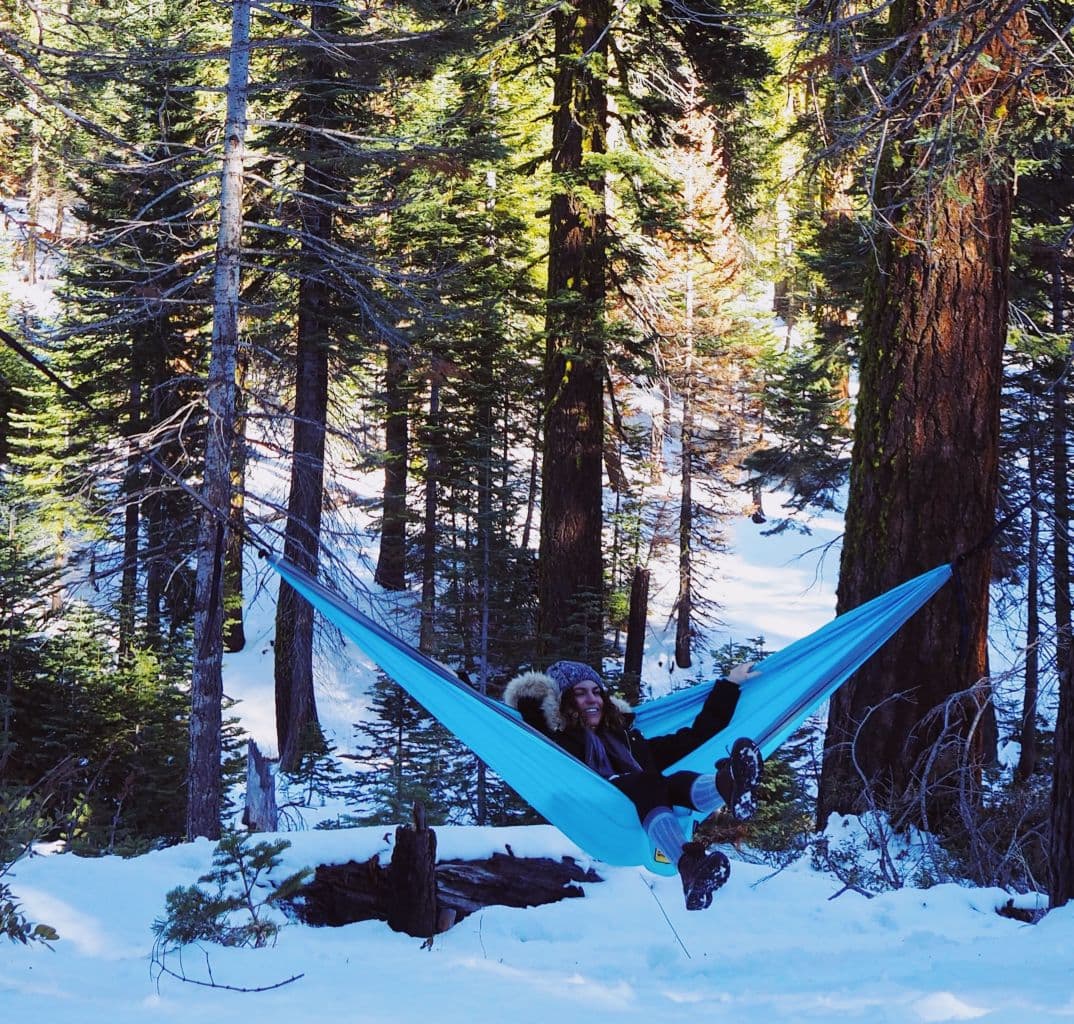
5. Boil hot water for your sleeping bag
This trick saved my sanity one very cold night near the summit of Mt. Whitney. Here’s what you do: Fill a stainless steel or BPA-free water bottle with boiling hot water and bring it into your sleeping bag. Cozy up with the warm water on any of these crucial areas: inside the inner thighs (my spot of choice), your core, or your neck area near the jugular. Getting the warmth flowing in these key areas really helps heat up the rest of your body as your blood flows.
Warning: My bottle was ice cold by about 4am, BUT by then I was just so grateful to have had some warmth and good sleep.
6. Master the bedtime routine
Get active to stay warm
When it’s cold and you’ve put out the fire, all you’ll want to do is crawl into your cozy sleeping bag. I know, and I feel you. But I have another idea. Get that heart rate pumping with some jumping jacks. You’ll instantly warm and bring that into bed with you. But don’t sweat! For aforementioned reasons.
Avoid liquids
Also, avoid a lot of liquids after dinnertime. This is obvious, but the last thing you want to do in the middle of the night is get up to pee, brrr.
But, pee if you must
I feel it is my duty to say this: if you have to pee at 2am, GO PEE. Sitting there stewing about it will only cause you to lose more sleep. Trust me, this is a scientific fact. (Also something about the body burns calories/wastes energy holding it in. So, really, science.)
High-calorie snacks are your friend
Another tip is to eat a high-calorie snack before bed and/or bring one into your sleeping bag with you to munch on if you get cold in the middle of the night. Why does this work? Simple: your body requires fuel to keep you warm, so by forcing it to work and metabolize sugars, fats, or carbohydrates, you’re kicking it into action.
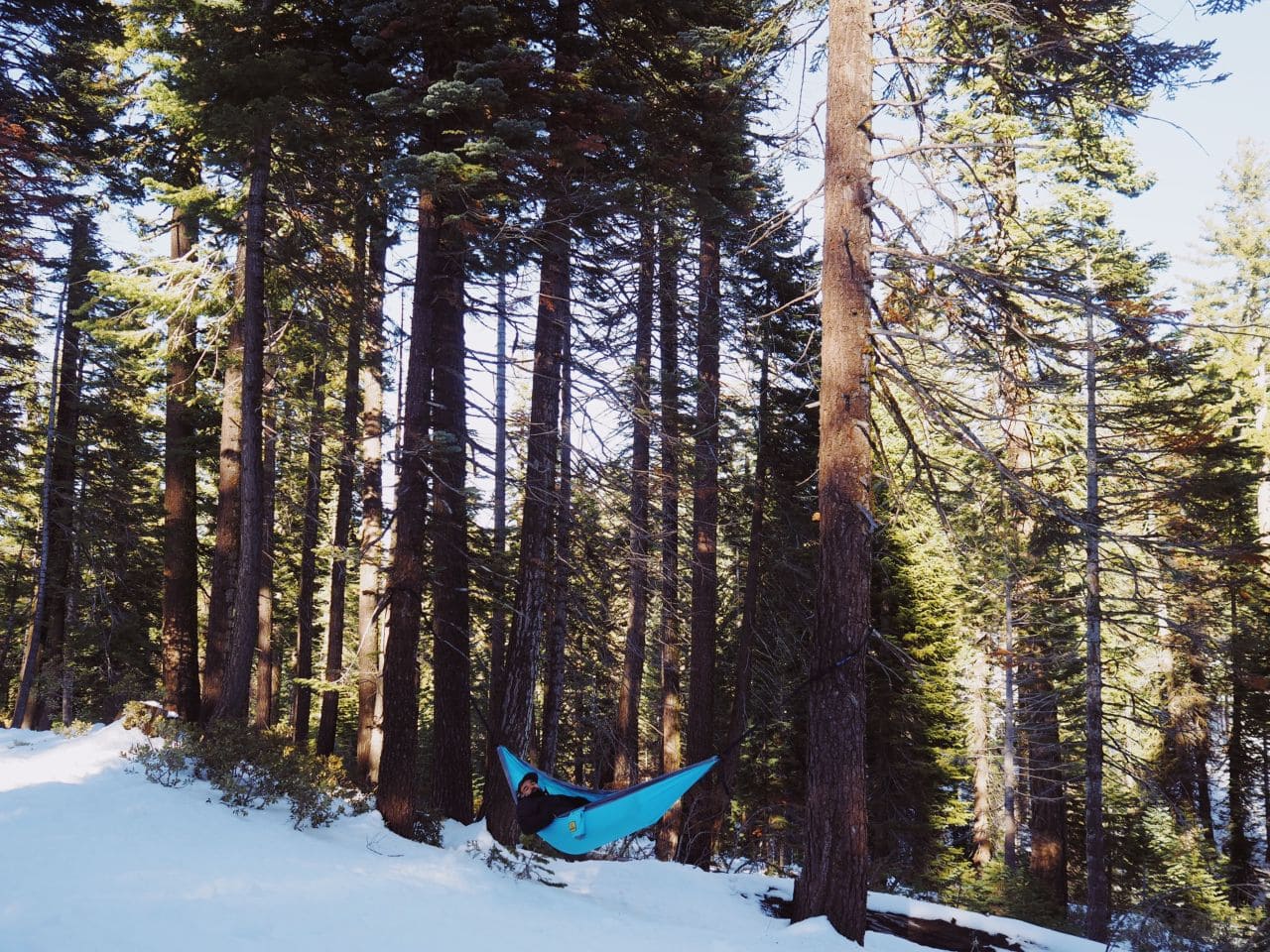
7. Don’t hide inside your sleeping bag
I know it’s tempting. I am guilty of this because it just feels like the natural thing to do. The problem with crawling into your sleeping bag to try to harbor warmth is that your breath creates condensation, which gets trapped inside with you. If you have a synthetic bag, this moisture is working against your sleeping bag, and the wetness causes a decline in insulation.
Instead, tighten the sleeping bag around your neck and close the hood around your head and face, always keeping your mouth and nose open for the passage of air—no matter how much you want to crawl inside. Me? I’ll be inside…
8. Keep your water warm and drinkable
It’s easy to forget to drink water when it’s cold outside, so you’re actually at a higher risk for dehydration. Another risk? Letting your water freeze overnight.
Frozen water is no good to anyone, so choose an insulated water bottle and stay hydrated. Drinking cold water is working against you, so rely on warm water and soups, and keep them warm with high quality insulated bottles.
Pro tip: Water freezers from the top down, so store your water bottles upside down to hopefully keep the top from freezing shut.
9. Bring your electronics into your sleeping bag
Okay, so this one won’t keep you warm, but electronics get cold, too, so bring them into your sleeping bag (down by your feet is a great option) to spare the battery life or cause worse damage. If your electronics get too cold and the batteries drain, warm them back up in your hands or between your legs. They may turn back on.
Check your electronics for temperature restrictions to make sure they’ll be safe and operable before heading out, as extreme conditions can harm your gear.
MORE: Essential Camping Packing List
Even more cold weather camping tips…
- Check the weather forecast and be prepared for variant conditions
- Read up on frostbite and hypothermia so you know how to avoid them
- Research and bring a proper backpacking stove, which are ideal for winter camping
- Stay active during the day to keep warm
- Take shorter stops for snacks and breaks, not letting your body cool down
- Prepare quick, hot meals that don’t require much prep or cleaning
Winter camping essentials
- Extra fuel for your stove — this is one of the 10 essentials but it’s worth mentioning again
- Bring a book — the days are shorter in winter and if it’s cold, you may want to retreat to your tent earlier than normal
- Pack sunglasses — the sun shines surprisingly bright off snow
- Lather on the sunscreen — see above
Cold weather camping checklist: what to wear winter camping
- Light or mid-weight base layers on top and bottom (wool or synthetics)
- Thicker middle layer to help retain heat (puffer jacket)
- Outer layer (shell) that is waterproof and breathable (rain jacket and snow pants)
- Winter hat
- Balaclava to cover your face
- Gloves/mittens
- Hand warmers (pro tip: shove ’em in your boots to keep your toes warm, too)
- Wool socks (bring extra pairs)
- Proper boots
- Flask of whiskey 😉
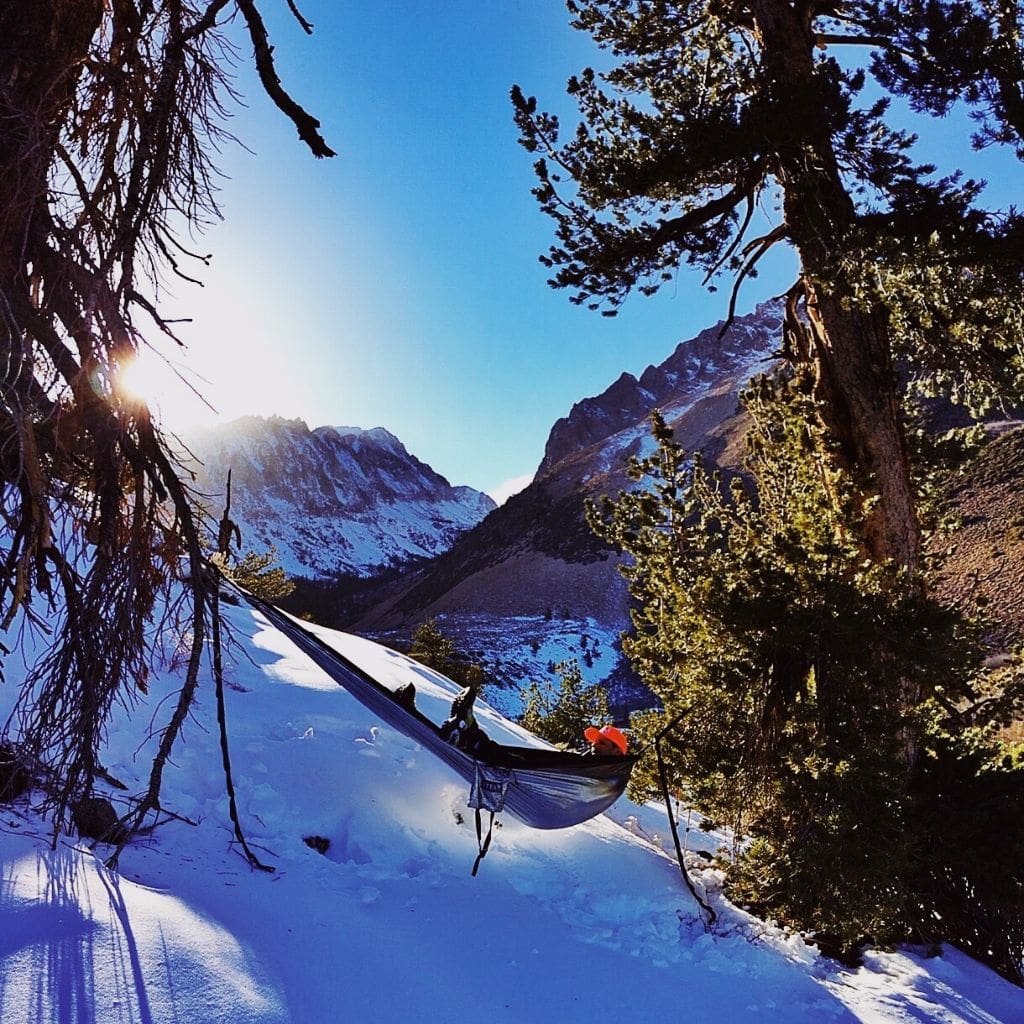
Pin this for later!


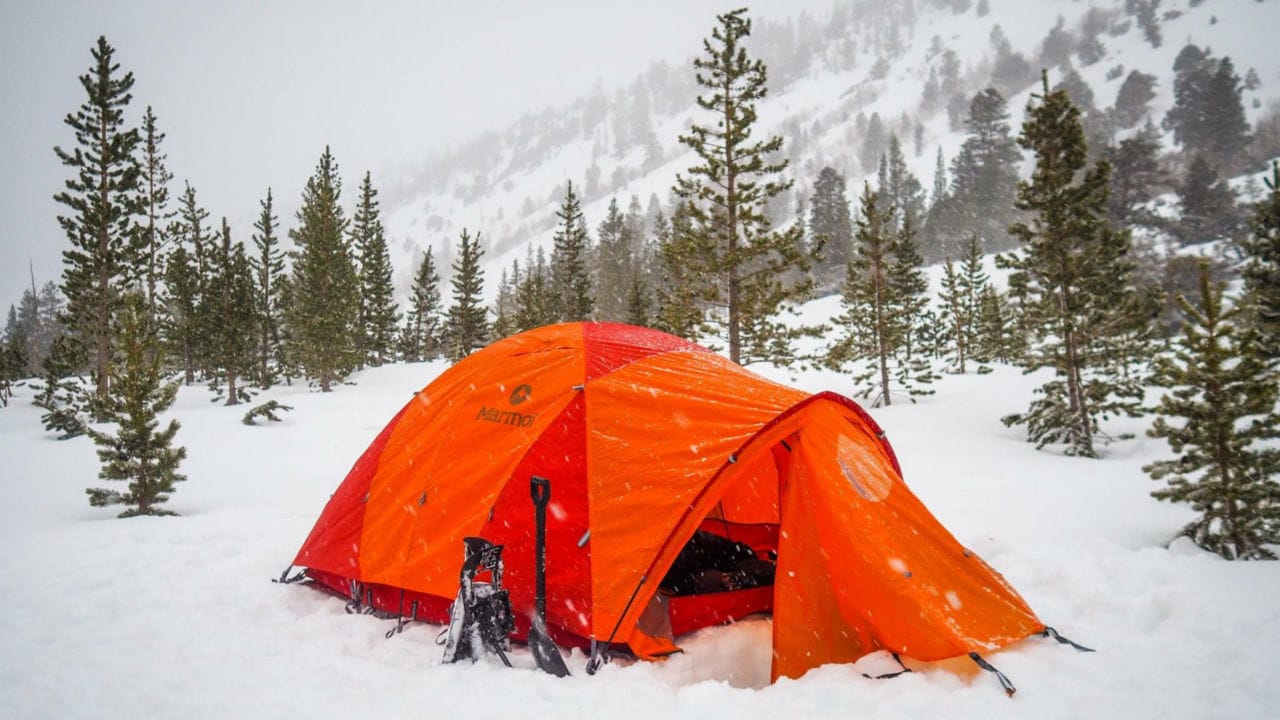 When you buy something using links in our stories, we may earn a small commission.
When you buy something using links in our stories, we may earn a small commission. 